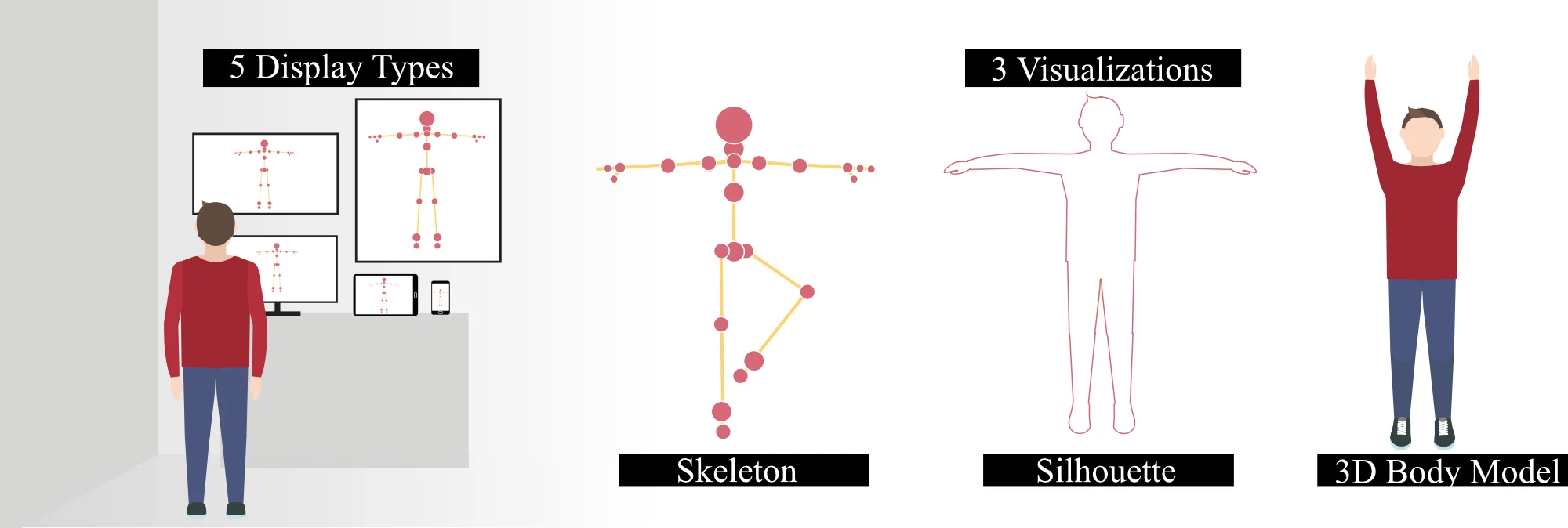CameraReady: Assessing the Influence of Display Types and Visualizations on Posture Guidance

Computer-supported posture guidance is used in sports, dance training, expression of art with movements, and learning gestures for interaction. At present, the influence of display types and visualizations have not been investigated in the literature. These factors are important as they directly impact perception and cognitive load, and hence influence the performance of participants. In this paper, we conducted a controlled experiment with 20 participants to compare the use of five display types with different screen sizes: smartphones, tablets, desktop monitors, TVs, and large displays. On each device, we compared three common visualizations for posture guidance: skeletons, silhouettes, and 3d body models. To conduct our assessment, we developed a mobile and cross-platform system that only requires a single camera. Our results show that compared to a smartphone display, larger displays show a lower error (12%). Regarding the choice of visualization, participants rated 3D body models as significantly more usable in comparison to a skeleton visualization.
Video
Publication
Hesham Elsayed,
Philipp Hoffmann,
Sebastian Günther,
Martin Schmitz,
Martin Weigel,
Max Mühlhäuser,
and
Florian Müller
CameraReady: Assessing the Influence of Display Types and Visualizations on Posture Guidance
In Proceedings of ACM DIS '21.
Project Page
PDF
BibTeX
DOI
Full Paper
Hesham Elsayed,
Martin Weigel,
Julius von Willich,
Markus Funk,
and
Max Mühlhäuser
APS: A 3D Human Body Posture Set as a Baseline for Posture Guidance
PETRA 2019 Workshop “Designing Assistive Environments for Manufacturing (DAEM)”.
Project Page
PDF
BibTeX
DOI
Workshop Paper
